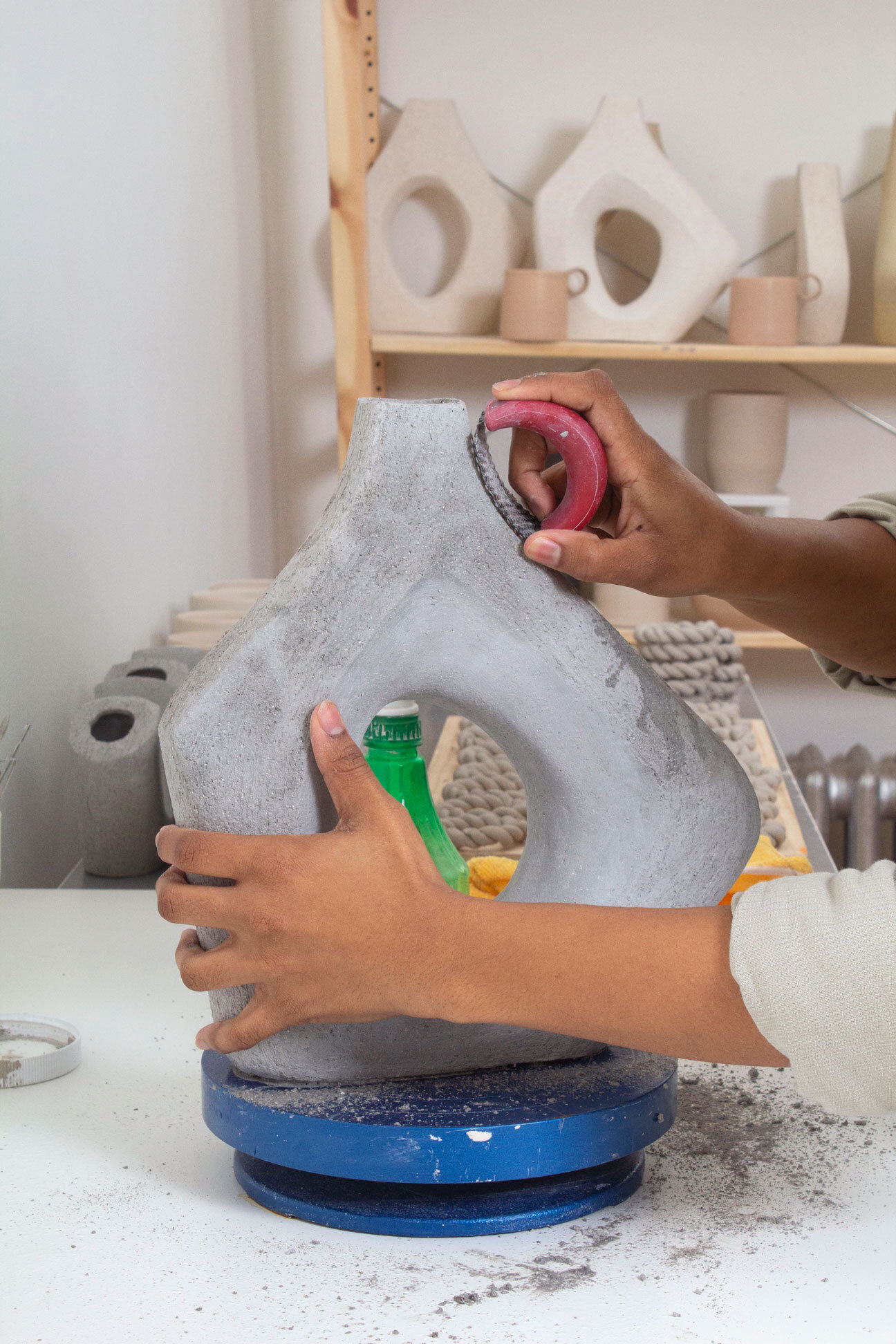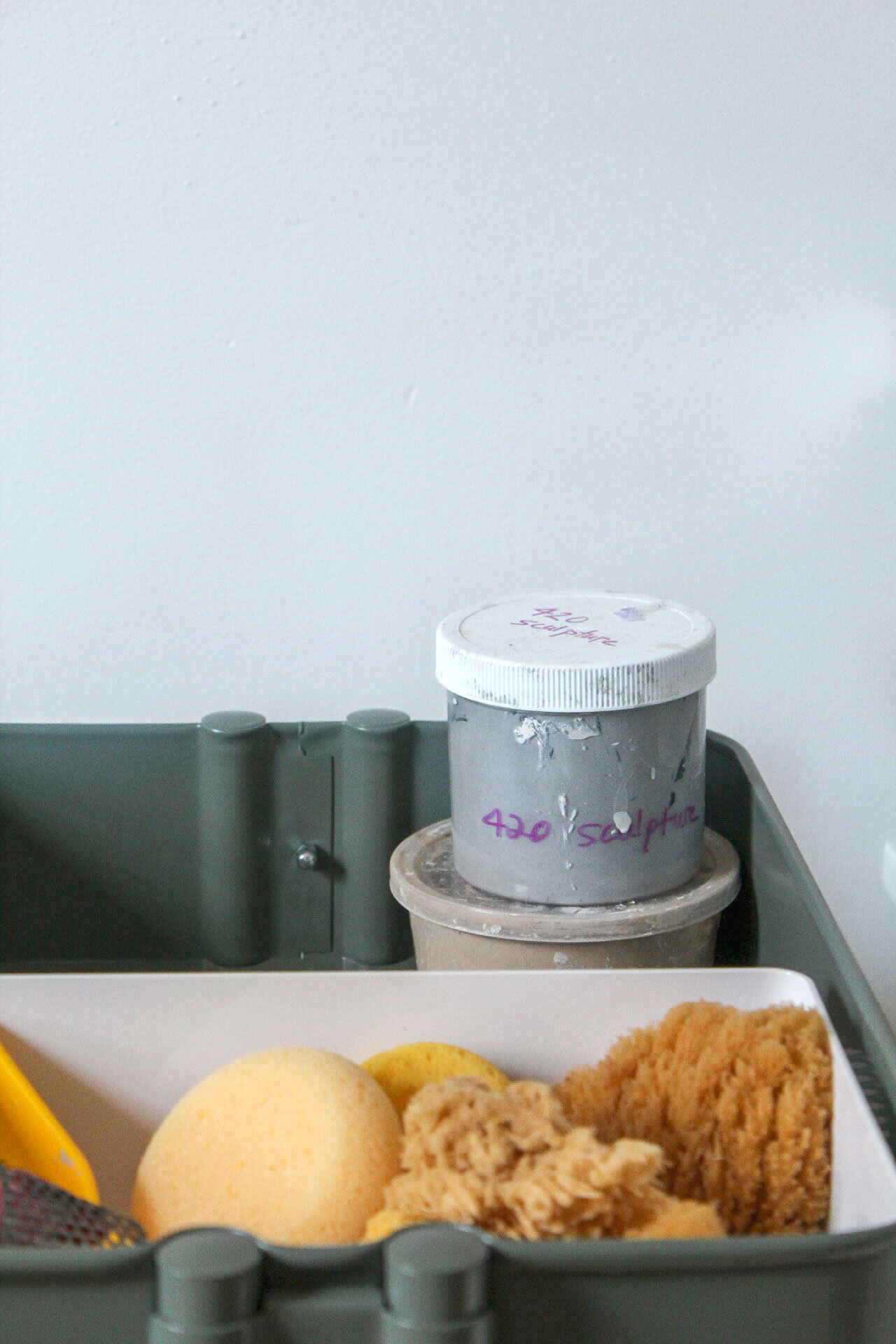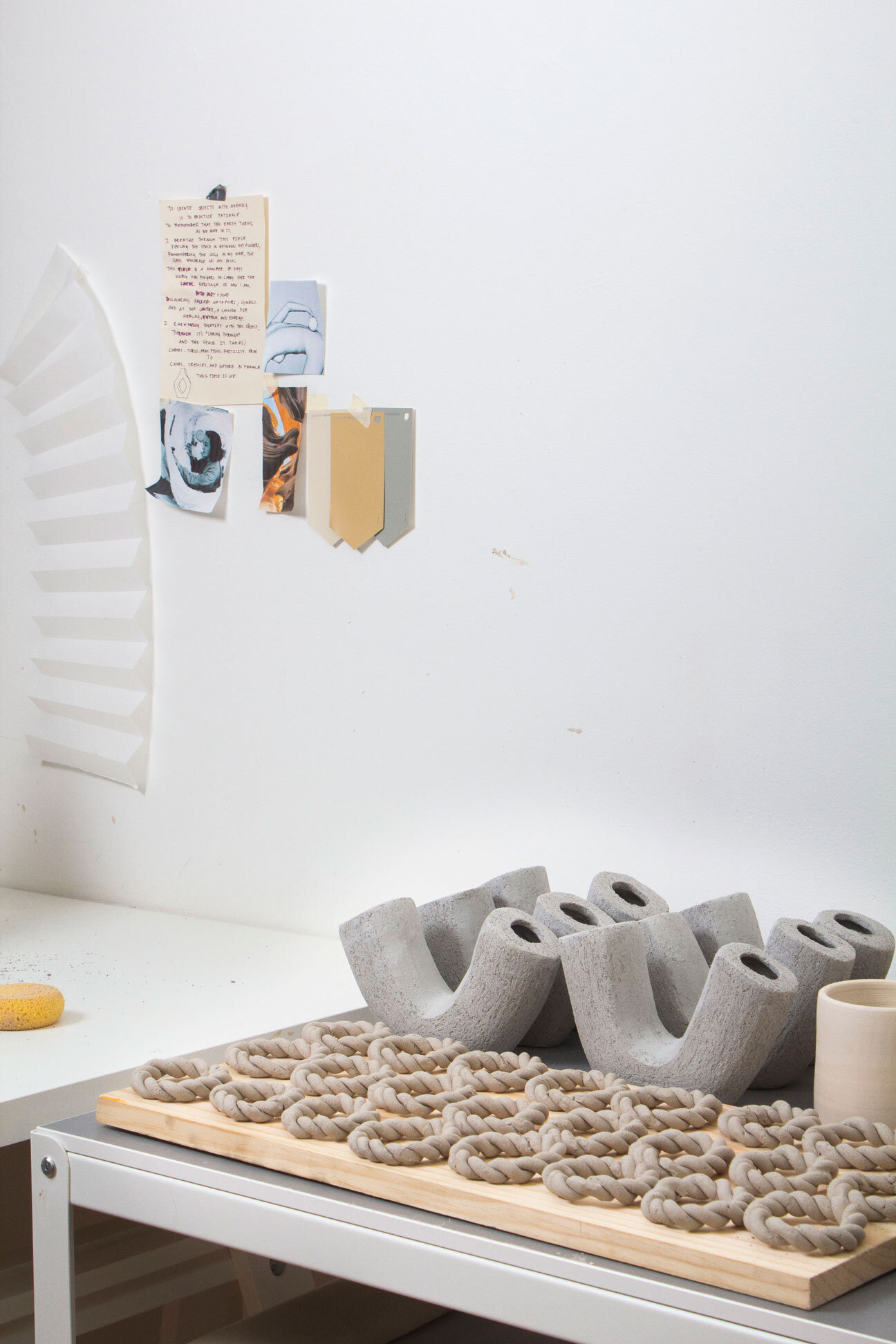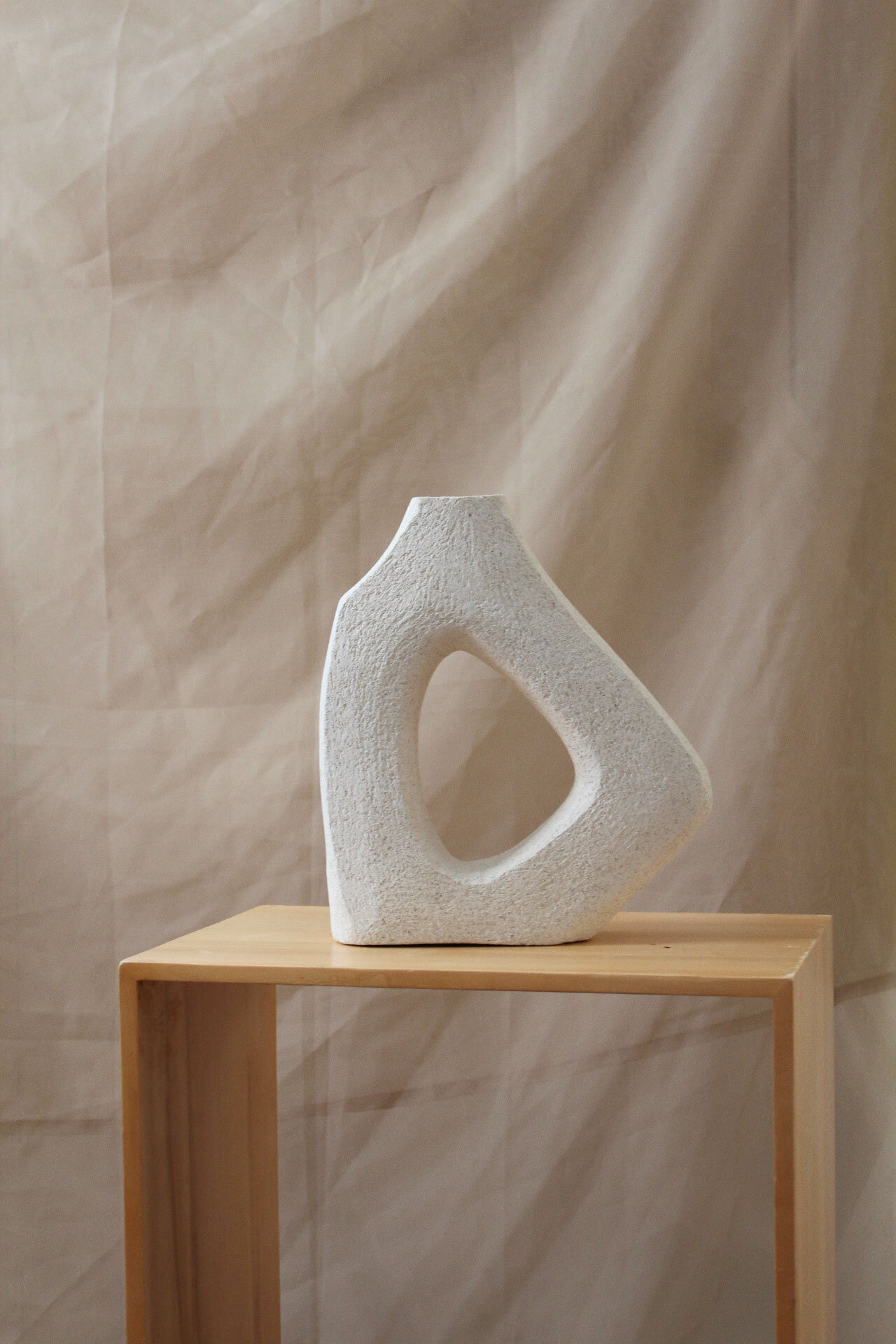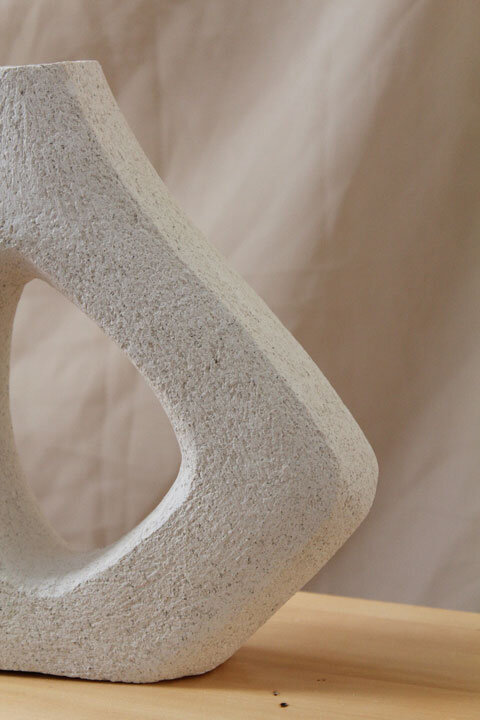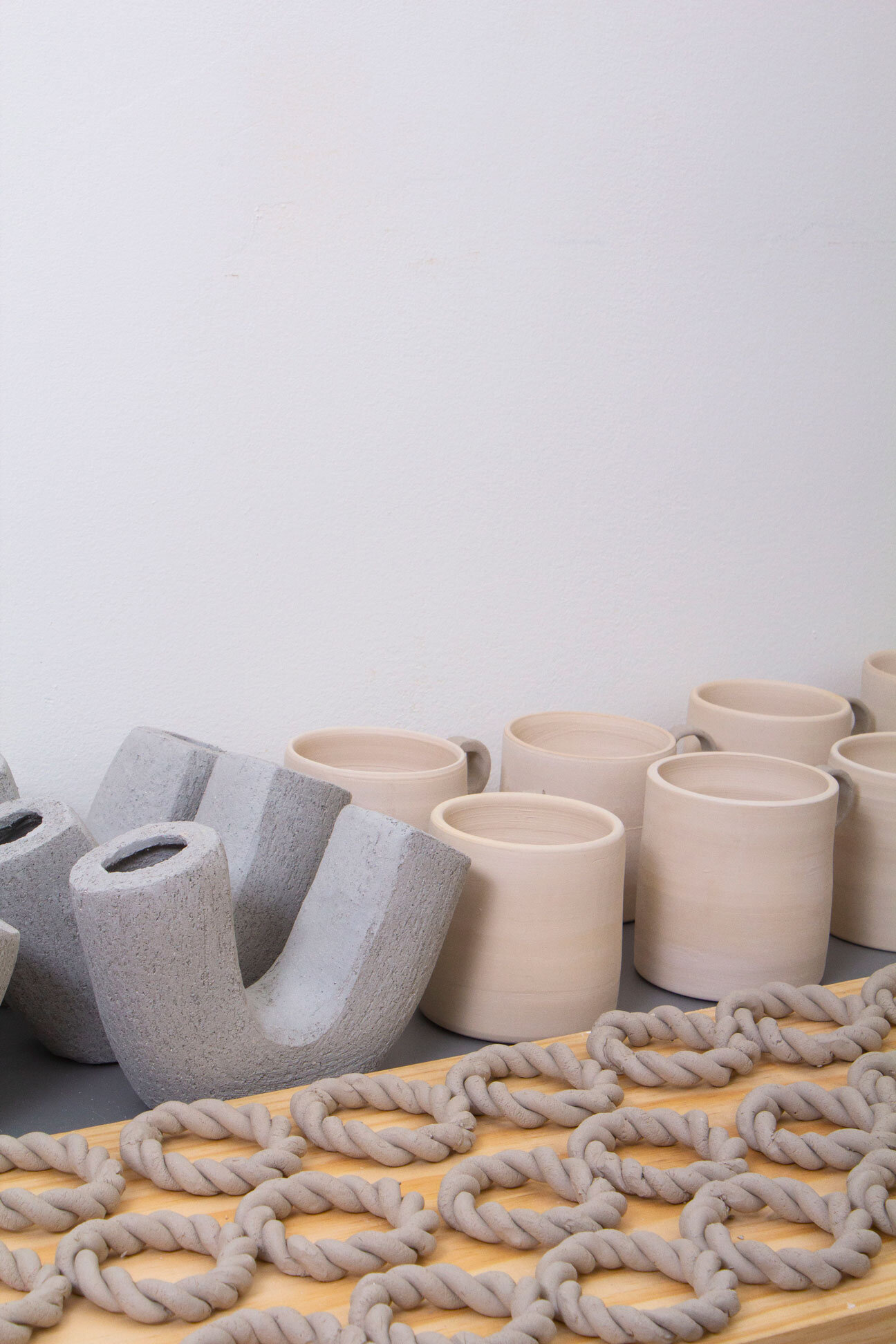New York ceramicist Keraclay examines the natural world through minimal sculptures
American artist Virginia Felix is the creative force behind Keraclay, a collection of modern ceramic pieces made from recycled clay. Her minimal designs take influence from the natural environment, featuring a series of organic structures spanning across tableware, lighting and sculpture. In addition to her homeware line, the ceramicist has also developed the Figura Project which explores shape and negative space through a sequence of sculptural forms.
As a native New Yorker, Felix splits her time between her home studio and shared communal workspace in Downtown Brooklyn. She reveals that most of her work is made in her apartment’s dedicated ‘clay room’ but she also enjoys working alongside others at a shared studio at which she is a member.
“Both spaces provide me with a balance between solitude and togetherness needed to thrive as an artist.”
“In my home studio it’s quiet, I’m surrounded by a collection of authors and work from other ceramicists and artists. Whereas in the communal studio it’s nice to see familiar faces, there’s a camaraderie that we all share when we’re creating alongside one another, it’s somewhat euphoric.”
Several of the artist’s sculptures from the Figura Project are also available as lighting designs, enhancing the silhouette of the piece’s ceramic base by casting a shadow. She explains how this invites people to interact with the works and incorporate them into their daily lives.
“There’s something about giving a piece a chance to interact with the negative space that surrounds it, where it can coexist with other objects.”
“There’s a quote by George Jimmel, a German philosopher, that I try to live by when in the studio since I’ve read his works, “A pottery vessel, unlike a painting or statue, is not intended to be insulated and untouchable but is meant to fulfil a purpose-if only symbolically. For it is held in the hand and drawn in the movement of practical life. Thus, the vessel stands in two worlds at one and the same time.”
Felix explains creativity has always played an important role in her life, having explored multiple mediums before deciding to pursue a practice in ceramics.
She recalls the fascination taken from her first encounter working with clay and the ongoing process of gaining an understanding of the material’s unpredictable nature.
“The elements in the material, its vibration, its need for airflow and its imperfection made me desire to work with it more. Clay still surprises me, and it promotes taking risks while confronting my vulnerabilities, something I’ve always struggled with across other mediums.”
The artist sees ceramics as an “opportunity to be present but also escape into the physicality of a working vessel.” Adding the “meditative craft” allows a “feeling of connectedness, engaging physically and emotionally to the earth-bound nature of clay.”
“Some days the clay needs guidance and other days it just guides me. It’s become this give and take relationship that I absolutely adore!”
Looking to further explore her relationship with clay, Felix introduced the Figura Project in 2020 comprised of a series of sculptural vessels created in response to the natural world. For this collection of works, the artist spent time studying some of the Earth’s historic rock formations, looking closely at negative space and depth. From this research she began to link similar structures and qualities found across organic matter including the planet’s surface, the materiality of clay and the human body, all of them sharing the potential to be “elemental, organic and volatile”.
The artist reveals her initial influence for this project was drawn from Arizona’s Antelope Canyon, a winding geological formation in the US. The 120ft-deep walls of the sandstone slot canyon displays millions of years worth of water erosion on its red, carved surfaces. By using a natural material such as clay, Felix hopes to celebrate and recreate these organic elements by hand.
“I do my best to embody the elements of the natural world whether it’s with the certain textures or Earth’s formations.”
“We have this ubiquitous material like clay that comes from the very elements of earth and I wanted to give back in a way by honouring the formations Earth created on its own over time.”
“A part of me wanted to bring parts of Earth into homes that resemble some of the places that still exist. I refrain from using glazes in most of my sculptures to commit to the organic origins of clay by only using water, air, fire and rocks, the very components that transformed our home over billions of years.”
She reveals how these sculptures are usually drawn up as sketches, exploring varying textures and silhouettes.
“When I’m working on a new sculpture the process is far more complex since I take into account the notion of space, time, different clay bodies while also documenting the process.”
“I find that I immerse into a different headspace and any thoughts that cross my mind I write them down. This practice lends to my overall value of being connected and practicing mindfulness.”
“There’s something to be said for opening yourself up to the experience of creating, sometimes the guidance of clay itself inspires and when you give into it, it becomes much deeper allowing you to untap a higher flow of energy and ideas.”
To prepare for a day of working with clay, the ceramicist describes her morning ritual in detail.
“I walk into my clay room, sit at my hand-building table, wedge some clay, and in those moments of preparing for the day’s work, I’m rehearsing the next steps.”
“I ask the clay itself, ‘Will it be a good day, or will it be a bad day?’ There are times when clay does not work with you, either you forget to centre that day, or your hands just weren’t steady enough and it could ruin a perfectly intentioned day. So I’ve limited the micromanaging when creating new work and just allow myself to flow with the material.”
Felix also find inspiration for her work from literature and the neighbouring ceramic community in New York.
“Between the diversity of people, being exposed to different forms of art and joining a range of communities, it has really helped inform me as an artist.”
“As a person of colour, I found that being in a widely diverse space has allowed me to be open with my practice and express with confidence. There’s a comfort in being around both like-minded and extremely different individuals.”
The artist reveals her work is intended for people who “desire to connect with the elements of our environment and to one another. And for those who make their homes a sanctuary for influence and positivity.”
Bearing sustainability in mind, she continues to use recycled clay across her body of ceramic works.
“I think it’s important to be kind to our environment and to the people who work hard to maintain it, it’s our only home. Recycling clay is almost an art form in and of itself, it’s the opportunity of giving clay another chance at life after having lived in a different form.”
Over the course of the last year, throughout Covid and multiple lockdowns the ceramicist reveals she’s been able to develop her practice and experiment, whilst practicing self-care and connecting with other artists and makers online.
“I’ve met a lot of individuals online that have inspired me to look at things differently. It was an emotional year too and as an artist, you kind of forget to practice self-care because you get so caught up in the making of things and the pressure to not waste the day, but having the opportunity to practice self-care on occasion and being able to work from home has really balanced that out for me. I’m extremely grateful for that.”
“In the future I’d definitely like to explore more of Earth’s structures to expand the Figura Project and perhaps have an exhibit one day. I have found myself being increasingly drawn to geological shapes and I hope to explore more of that, maybe even consider structures underwater as inspiration for a new chapter in the Figura series.”
See all ceramics by Keraclay here.
All images by Virginia Felix.


